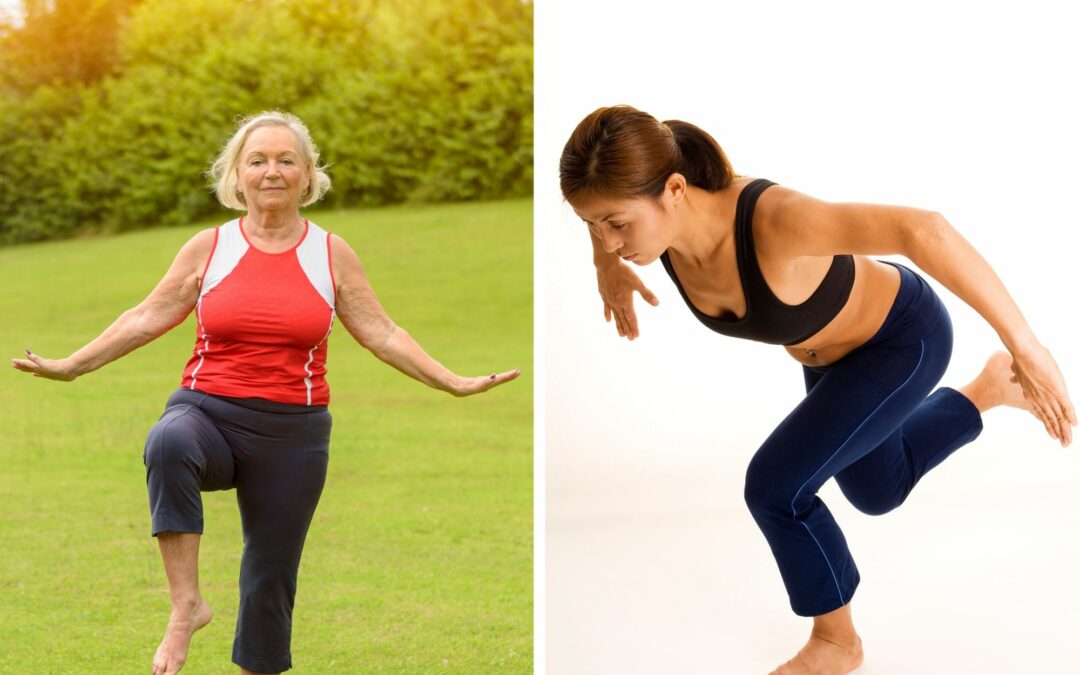Written by Tom Christ PT, DPT
Single Leg Series
As first mentioned in the first Functional Friday blog, physical therapists will often ask their patients to perform a number of whole body movements that may seem irrelevant to the patient’s condition. Previously we discussed why PT’s will watch patients perform a squat motion, today we will discuss two other common functional movements, the single leg stance, and the single leg squat.
Single Leg Stance: While this seems like a simple task, the ability (or lack thereof) and the quality of performing a single leg stance provides PT’s a lot of information. This is a functional skill required for basic level daily activities. Think about walking for example, when walking we are repeatedly cycling through being on two legs, and one leg. The inability to maintain proper balance on one leg leads to compensatory motions at the foot, ankle, knee, hip, back, and even into the shoulder and neck and ultimately may predispose one to injuries over time. If the individual is more active and frequently performs running or jumping activities, these compensatory motions are magnified and further puts the individual at risk for injury. A great sports example of the importance of a stable single leg stance is a baseball pitcher. During the windup the pitcher will be on one leg, and during the follow through they again are on one leg for a brief period of time. Instability on one leg will disrupt the ability to generate power and deliver an accurate pitch, and the body’s attempt to compensate for the lack of stability may over time lead to pain in a variety of places in the body, even the shoulder or elbow. But what exactly is the therapist looking for when observing a single leg stance? Besides the obvious of whether or not the individual can perform the task, it actually takes a trained eye to pick out subtle but important dysfunctions.
Common Single Leg Stance Dysfunctions
- Unable to stand on one leg for more than 10 seconds
- Excessive swaying of the body or bending to the right or left
- Pelvis of the leg in the air dropping
- Shifting the body weight entirely to the stance leg side (some weight shift is normal)
- Hips twisting right and left
- Hips bending forward
- Knees bending or caving inwards or wiggling in and out
- Excessive foot twisting inward (pronation) and outwar (supination) – Note: Some pronation and supination is normal.
- Pain
- Difference in performance of right and left sides
Single Leg Squat: The cousin of the single leg stance, the single leg squat is often much more difficult to perform, however equally important, especially in the active population. Consider running. The action of running it is nothing more than a series of alternating right and left single leg squats. This makes it imperative that runners have sound stability and technique with their single leg squats to avoid overuse injuries that occur due to compensatory movement patterns.
Poor ability to perform a single leg squat is often associated with foot, ankle, knee, and hip pain in runners making it imperative to improve the strength, stability, and motor control of the muscles active during the single leg squat. Because of the close relationship of a single leg squat and so many athletic and functional activities, the single leg squat is an obvious choice for PT’s to choose to assess with patients and athletes. You will see in the following list, that many of the same dysfunctions seen in the single leg stance are also present in the single leg squat.
Common Single Leg Squat Dysfunctions:
- Excessive swaying of the body or bending to the right or left
- Pelvis of the leg in the air dropping
- Shifting the body weight entirely to the stance leg side (some weight shift is normal)
- Excessive forward bend of the trunk
- Hips twisting right and left
- Knees bending or caving inwards or wiggling in and out
- Excessive foot twisting inward (pronation) and outwar (supination) – Note: Some pronation and supination is normal.
- Inability to maintain balance and/or depth
- Pain
- Difference in performance of right and left sides
The listed single leg stance and single leg squat dysfunctions can lead to further compensations throughout the body that may cause undo stress and subsequent pain almost anywhere in the body. If you feel that your single leg stance and/or single leg squat stability and mechanics may be off, don’t hesitate to see a physical therapist for exercises and techniques to help!
Be sure to follow our Functional Friday’s Instagram series @motionstability for more information and helpful videos!


Recent Comments